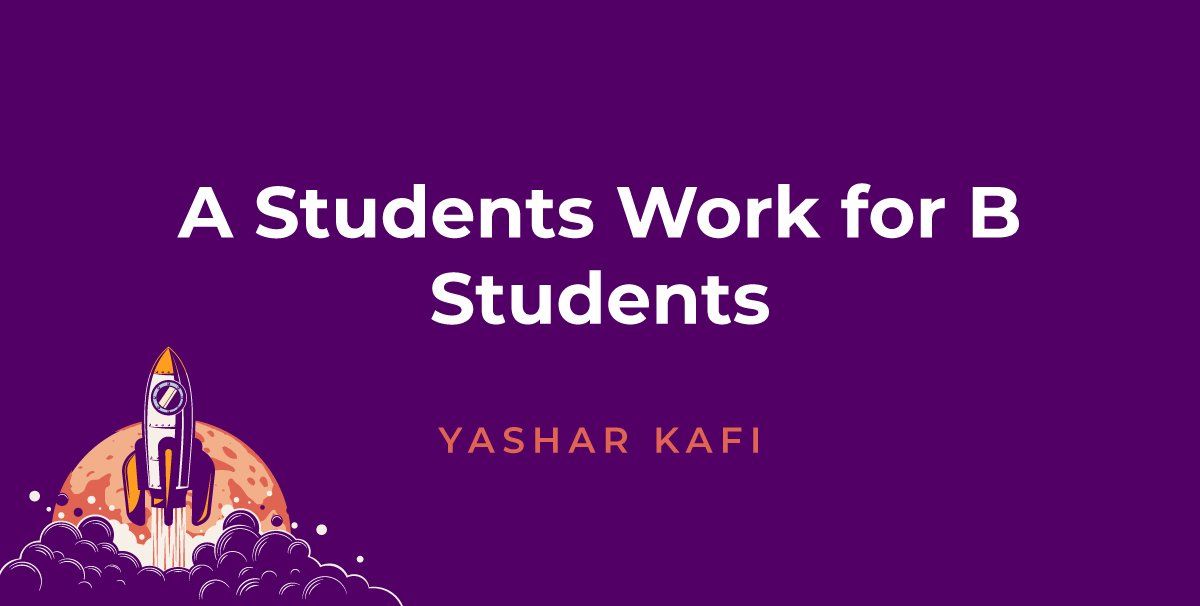A Students Work for B Students
Have you ever heard the anecdote “Cs get degrees?” Now there is a newer version of this idea—“A students work for B students”—but is there any truth to this?
Are A Students Better at Work? Actually?
This idea that A students are no longer shoo-ins for success over their B student counterparts has gotten so much steam that there are entire Reddit threads about it. Users debate the idea, and as the sides of opposing opinions get drawn, it can get quite heated! Some argue that their good grades will ensure that they are always leading the pack, while others say it is impossible to tell who will be good at life based solely on the kind of grades you get.
No stranger to controversy and always able to be counted upon to come in strong with an opinion, successful CEO Elon Musk shared his two cents on the subject way back in 2014. Musk was one of the first to step out and declare society’s current schooling model (bowing to the supremacy of A students above all) as useless.
During an interview with Auto Bild, Musk indicated that he wasn’t a fan of the traditional schooling structure. “There’s no need even to have a college degree at all, or even high school. If somebody graduated from a great university, that may be an indication that they will be capable of great things but it’s not necessarily the case,” Musk said.
Musk has even gone as far as to make his own curriculum for his children, and later on, via a heated Twitter exchange, Musk took things a step further by stating that he hasn’t been to Harvard, but the people that work for him have.
Still, does this mean that it’s commonplace for less educated people to be employers of more educated people? Do A Students Work for B Students?
Do A Students Work for B Students?
On a 2015 Quora thread, a former “big entrepreneur” said of this idea (verbatim quote): “It’s pretty true, to be honest, but I’m using real statistics here, according to inc. com, 8/10 self-made millionaires are not A students, they are D, C, and B students. Instead, they share the same characteristics, they ‘Never give up,’ ‘They have big dreams.’ And in ‘Millionaire’s Mind,’ the author Thomas, got no correlation between high SAT scores and being rich. So never give up, a piece of paper can’t decide your future, even if it starts with SAT or ACT. No, your future is in your own hand, it’s your responsibility to shape it grade, you are against all odds, we are all born to win but the action we takes will shape our success.”
Despite “big entrepreneurs” seeming to have some authority on the topic, the statement is still largely anecdotal. So let’s look at stats.
Education and Entrepreneurs
According to embroker.com, since 2017, the number of self-employed college graduates dropped by 8%. In fact, according to FreshBooks’ 2019 annual report, a college degree makes no difference in small business revenue, while Inc.com revealed that the majority of entrepreneurs attributed their success to determination, risk-taking, and vision—not education.
Despite people indicating (or boldly declaring, as in Musk’s case) that college might not be worth it, the stats pointing to education being important are still compelling. For instance, further fanning the flames of this fiery debate are statistics from the NCES, which show that in March 2020, the employment rate for female 25-to 34-year-olds with a bachelor’s or higher degree was higher than for similar individuals who had not completed high school, and not by just a slight margin. It was a telling 83 percent vs. 41 percent.
The truth is that there isn’t much information supporting the idea that A students work for B students, and perhaps we’ll never know for sure. But rather than go round in a swirling, cyclical debate, I would wager that the more important thing is to work hard, work smart, and make sure you like what you do. And that you’re deeply invested in it. As long as you have that, it is likely you will not only excel but thrive.
Written by Yashar Kafi




